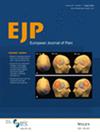Chronic Pain and Labour Market Affiliation: Effect of Demographic Factors and Comorbidities 5 Years Before and 2 Years After Multidisciplinary Treatment
Abstract
Purpose
This study investigates the association of sociodemographic factors and comorbidities with labour market affiliation among patients with non-malignant chronic pain treated at multidisciplinary pain centres in Denmark.
Methods
This registry-based cohort study used data from the nationwide Danish Civil Registration System and Danish National Patient Registry. Patients treated at multidisciplinary pain centres in 2013–2017 were included. Labour market affiliation was assessed 5 years before and 2 years after treatment and at treatment initiation (baseline). Sequence and logistic regression analyses were used to identify associations.
Results
2375 patients (median age 47 years, female 64%, comorbidity: Mean Charlson's comorbidity score: 0.88, affective disorder: 45%, anxiety disorder: 37.0%, personality disorder: 7.8%) were included. At treatment initiation, only 34.2% of patients were employed, compared to 58.6% 5 years before treatment. Sequence analysis revealed that most patients remained in or transitioned to a ‘no labour market affiliation’ state. Factors significantly associated with labour market affiliation across timepoints included age (adjusted odd ratio [aOR] and 95% confidence interval [CI]age 56–65 = 0.51 [0.38–0.69]), marital status (aORcohabitant = 1.58 [1.30–1.92]), education level (aORhigh = 4.56 [3.51–5.93]), immigrant status (aORnon-western = 0.35 [0.26–0.45]) and psychiatric comorbidities (aORaffective disorders = 0.67 [0.56–0.87]).
Conclusion
Patients with high-impact, treatment-resistant chronic pain face early labour market detachment, highlighting the need for timely, equitable interventions to support employment, especially among vulnerable groups.
Significance Statement
The study offers new evidence on how socioeconomic and psychiatric comorbid vulnerabilities shape long-term labour market affiliation before relevant multidisciplinary treatment is initiated and suggests that key intervention opportunities for at-risk patients may be missed under current practice.


 求助内容:
求助内容: 应助结果提醒方式:
应助结果提醒方式:


